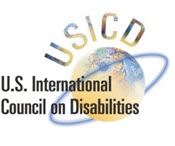3.4 Disability Inclusive WASH: Water, Sanitation and Hygiene as an Element of Article 32 Implementation
Intended Audience: Persons with disabilities, Organizations of Persons with Disabilities (OPDs), Local Governments, Local NGOs, International NGOs, International governmental organizations (INGOs), Donor organizations (National, international)
Click here to download a power point version of this lesson to customize for your training purposes.
Please note: Credit should be given to the US International Council on Disabilities and Rehabilitation International.
Important Resources:
Disability Inclusion Matters for All (World Bank, video)
Local Experiences for Disability WASH (UNICEF, video)
Inclusive WASH COVID Guidance (HelpAge International)
Disability Inclusion through Rural WASH (World Vision, video)
Including Persons with Disabilities in Water Sector Operations (World Bank Group)
WASH Disability Inclusion Practices (UNICEF)
Three Key Changes for Disability Inclusive Water, Sanitation, and Hygiene (WaterAid)
WASH: Disability Inclusion (World Vision International)
Mainstreaming Disability and Ageing in Water, Sanitation, and Hygiene programmes (Hazel Jones – Expert on Inclusive WASH)
Key Learning Objectives in this module:
- Understand the importance of unrestricted access to water and sanitation facilities for everyone.
- Consider barriers and the connection between water and sanitation access to the CRPD and Sustainable Development Goals (SDGs) framework.
- Identify entry points for OPDs in WASH.
- Consider strategies for advancing inclusive WASH through disability inclusive development.
